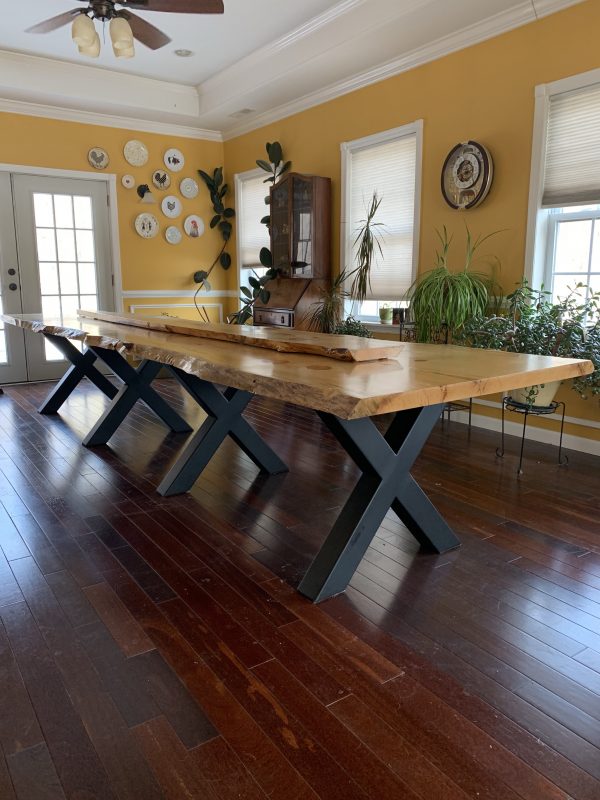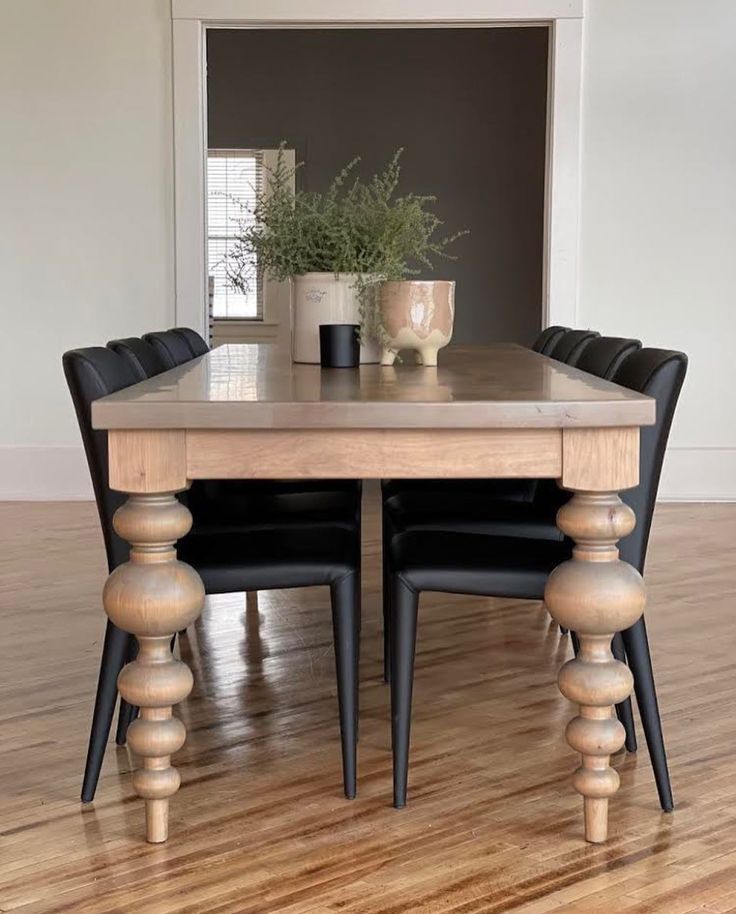How Dining Room Table Legs Can Change the Entire Aesthetic of Your Room
How Dining Room Table Legs Can Change the Entire Aesthetic of Your Room
Blog Article
From Conventional to Modern: Locate the Perfect Dining-room Table Legs for Your Style
While timeless designs such as cabriole and transformed legs stimulate a feeling of ageless sophistication, contemporary styles like barrette and geometric alternatives present an opportunity for striking aesthetic interest. As you think about these aspects, the concern stays: just how can you perfectly incorporate these diverse leg designs to develop a harmonious dining experience?
Understanding Table Leg Styles
The selection of dining-room table leg designs can significantly influence both the aesthetic appeals and capability of the area. Each leg style adds one-of-a-kind practical attributes and visual components, accommodating varied design choices and usage needs. Recognizing these designs is crucial for picking the best table that aligns with your general interior decoration vision.
For instance, tapered legs offer a clean, traditional look that can boost a room's beauty, while pedestal bases give security and make the most of legroom, making them excellent for smaller sized rooms. Barrette legs, a hallmark of mid-century contemporary layout, present a commercial style, enabling an airy, open feeling. Similarly, trestle legs evoke rustic appeal, supplying durable assistance and a feeling of timelessness.
In addition, the choice of products plays a significant role. Wooden legs can bring warmth and texture, whereas steel options typically convey a smooth, modern ambiance. Inevitably, recognizing table leg designs is crucial for creating a natural dining location that shows individual design while guaranteeing usefulness and convenience. By thoughtfully taking into consideration these components, you can improve both the practical and aesthetic appeal of your eating area.
Traditional Table Leg Options
When choosing dining space table legs, typical choices typically symbolize classic sophistication and workmanship. These designs mirror an abundant heritage and a commitment to top quality, making them perfect for those who appreciate classic looks.
Among one of the most iconic standard leg styles is the cabriole leg, defined by its graceful curved shape. This design commonly features decorative makings and is most generally discovered in Queen Anne and Chippendale furnishings. One more preferred option is the transformed leg, which boasts a collection of smooth, rounded shapes that supply a traditional appearance while maintaining security.
Moreover, the straight leg, while straightforward, offers a tough and basic framework that can mix flawlessly with a range of tabletop styles. For those attracted to ornate describing, claw-and-ball feet legs stimulate a feeling of magnificence and can work as a magnificent centerpiece in any eating room.
Last but not least, pedestal bases, although not strictly legs, supply an alternative conventional choice that enables for sufficient legroom and can be wonderfully sculpted. Each of these conventional leg designs adds to the general ambiance of a dining-room, marrying function with visual appeal.

Modern Table Leg Designs
Modern table leg designs provide a varied variety of styles that stress innovative products and tidy lines. These designs commonly resource focus on capability while functioning as striking centerpieces within a dining room. Minimalist visual appeals are widespread, with legs crafted from products such as metal, glass, and crafted timber, which add to a modern and ventilated feel.
One popular layout is the barrette leg, defined by its slim, conical framework that provides security without overwhelming the table top (dining room table legs). This style is typically found in mid-century contemporary furniture and can effortlessly enhance various table shapes. An additional pattern is the use of geometric shapes, where legs might take on angular or asymmetrical types, adding aesthetic passion and a touch of virtuosity

Blending Designs for Special Areas
Typically, homeowners seek to produce one-of-a-kind eating areas that mirror their individual style by mixing various design elements. This method allows for the consolidation of varied aesthetics, resulting in a harmonious yet unique environment. Matching a rustic wood table with streamlined, contemporary steel legs can produce an eye-catching comparison that raises the room's overall allure.
Furthermore, integrating vintage table legs with modern tabletops can stimulate a other sense of background while preserving a modern-day sensibility. Such mixes not only display individual taste however likewise urge creative thinking, allowing house owners to curate a room that really feels both individual and welcoming.
Color plays a critical role in this mixing process; choosing table legs that enhance or comparison with the existing shade system can improve visual passion. As an example, whitewashed legs can soften the daring of a dark table surface area, developing a balanced visual.
Tips for Picking the Right Legs
Selecting the right table legs is crucial for achieving both functionality and visual charm in your dining space. Begin by thinking about the total style of your room. Typical setups take advantage of legs that feature complex carvings or turned designs, while contemporary spaces may ask for streamlined, minimalist designs.
Next, analyze the elevation and stability of the legs. dining room table legs. Common dining tables range between 28 to 30 inches in height, so guarantee the legs complement this dimension for comfort. Additionally, robust materials, such as wood or metal, can boost stability and long life
Evaluate the leg form as well-- alternatives include directly, tapered, or pedestal layouts. her comment is here Straight legs use a classic appearance, while conical legs can add a touch of sophistication. Pedestal bases give adequate legroom and are optimal for smaller sized areas.
Conclusion
In recap, selecting the excellent dining room table legs needs careful factor to consider of both typical and modern designs. By harmonizing leg design, height, and material with the general decoration, a natural and welcoming environment can be achieved.
The variety of dining space table leg designs can significantly affect both the appearances and capability of the room. Eventually, recognizing table leg designs is vital for developing a cohesive eating area that reflects individual design while making sure usefulness and comfort.One of the most legendary typical leg styles is the cabriole leg, defined by its stylish rounded form. Straight legs offer a classic look, while tapered legs can add a touch of style.In summary, picking the suitable eating space table legs requires cautious consideration of both typical and contemporary designs.
Report this page